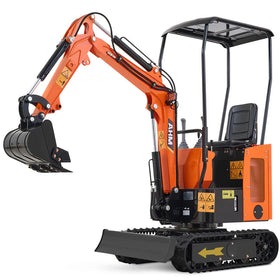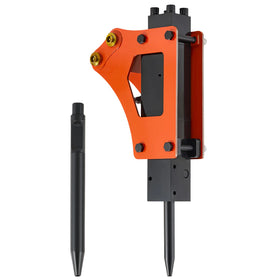After a weekend of yard work, you're often left with piles of grass clippings, branches, leaves, and other debris. Instead of letting these piles sit or struggling to stuff everything into trash bags, there are several practical solutions for handling yard waste effectively. Whether you're dealing with seasonal cleanups or regular maintenance, understanding your options will help you choose the best approach for your situation.
1. Create a Compost Pile

One of the most environmentally friendly ways to handle yard waste is to compost it. Composting transforms organic materials into nutrient-rich soil that can nourish your garden and landscape.
- To create an effective compost pile with yard waste:
- Start with a layer of brown materials (dry leaves, small twigs)
- Add green materials (fresh grass clippings, garden trimmings)
- Keep the pile moist but not soggy, similar to a wrung-out sponge
- Turn the pile every few weeks to accelerate decomposition
Most yard waste will transform into usable compost within 3-6 months, though woody materials take longer to break down. For faster results, chop or shred larger materials before adding them to your compost pile.
Some yard waste materials, like diseased plants or invasive species, shouldn't be composted at home. These require different disposal methods to prevent spreading problems throughout your yard.
2. Use Municipal Collection Services

Many communities offer curbside yard waste collection, either on a regular schedule or during specific seasons. This convenient option typically requires minimal effort beyond proper preparation.
To prepare yard waste for municipal collection:
- Check your local guidelines for collection days and accepted materials
- Use paper yard waste bags rather than plastic (most municipalities require this)
- Bundle branches to specified lengths (usually 4 feet or less)
- Keep individual bags or bundles under weight limits (typically 40-50 pounds)
Municipal collection works well for routine yard waste in moderate amounts. However, it may not accommodate large volumes from major projects or specific materials like stumps or large branches.
3. Find a Local Drop-Off Facility

When you have more yard waste than municipal collection can handle, local drop-off facilities offer a practical solution. These sites accept larger volumes and sometimes a wider range of materials.
- To use drop-off facilities effectively:
- Call ahead to confirm hours, fees, and accepted materials
- Sort your yard waste by type if required (separate leaves from branches)
- Be prepared to show proof of residency if required
- Consider renting a trailer if you have a large volume to transport
Drop-off facilities typically charge either by volume or weight. While fees are usually reasonable, they can add up for very large loads, making this option best for occasional larger cleanups rather than regular disposal.
4. Rent a Dumpster for Major Projects

For major landscaping overhauls, storm cleanup, or property clearing, a temporary dumpster rental offers the capacity and convenience you need. This approach works especially well when:
- You're generating large volumes of mixed yard waste
- The cleanup will take place over several days
- You need to dispose of materials not accepted by other methods
- Transportation to drop-off facilities isn't practical
A 10-yard dumpster typically suffices for most residential yard waste projects and costs approximately $250-450 for a week's rental. For extensive projects involving multiple trees or full property clearing, larger sizes are available.
5. Use a Mini Excavator for Efficient Yard Waste Handling

For properties with substantial yard waste challenges, particularly those involving stumps, large branches, or dense vegetation, equipment like mini excavators can dramatically improve efficiency. Using a mini excavator allows you to:
- Gather scattered debris quickly after storms
- Extract stubborn stumps that resist other removal methods
- Sort and move heavy materials without physical strain
- Create organized piles for processing or removal
Mini excavators are particularly valuable when dealing with multiple stumps or clearing overgrown areas. Their combination of power and precision makes them well-suited for challenging yard waste situations where manual tools would be impractical.
6. Process Yard Waste On-Site
Converting yard waste into usable materials right on your property eliminates disposal challenges while creating valuable resources for your landscape. On-site processing options include:
Chipping and Shredding Renting or purchasing a chipper/shredder converts branches and woody debris into mulch that can be used around trees and garden beds. This approach reduces volume by up to 80% while creating a useful product.
Leaf Mulching Using a mulching lawn mower to shred fallen leaves provides nutrients to your lawn while eliminating the need for raking and disposal. For heavier leaf fall, collect the shredded leaves to use as garden mulch.
Brush Piles In rural settings, creating strategic brush piles in wooded areas provides wildlife habitat while managing excess branches and brush. Place these piles away from structures and be aware of any local ordinances regarding brush piles.
On-site processing requires initial effort but eliminates ongoing disposal costs and transportation logistics.
7. Hire Professional Yard Waste Removal Services
When you lack the time, equipment, or physical ability to handle yard waste yourself, professional removal services offer a convenient solution. These services:
- Handle all aspects of collection and disposal
- Often provide same-day or next-day service
- Have equipment to handle challenging materials
- May offer recycling or composting of collected materials
Professional removal typically costs between $150-500 depending on volume, with additional fees for specialized handling like stump removal. While more expensive than DIY approaches, the convenience may be worth the investment for busy homeowners or particularly challenging situations.
Choosing the Right Yard Waste Solution for Your Situation

The best approach to yard waste depends on several factors specific to your property and situation:
Volume Considerations
Small Volume (1-3 bags weekly) Best options: Municipal collection, home composting Equipment needed: Basic yard tools, compost bin
Medium Volume (4-10 bags per cleanup) Best options: Municipal collection, drop-off facilities, on-site processing Equipment needed: Chipper/shredder (rental), trailer for transport
Large Volume (More than 10 bags at once) Best options: Dumpster rental, equipment rental, professional services Equipment needed: Mini excavator for handling, trailer for transport
Material Type Considerations
Different yard waste materials may require specialized handling:
Grass Clippings and Leaves
- Easiest to compost or use municipal collection
- Can be mulched in place with proper equipment
- Decompose relatively quickly in compost systems
Branches and Brush
- Require cutting or chipping for most disposal methods
- Take longer to decompose unless processed
- May have specific bundling requirements for municipal collection
Stumps and Large Roots
- Not accepted by most municipal programs
- Require specialized equipment for removal
- May need professional handling depending on size
You can read more about how to deal with tree stump here as well.
Frequency Considerations
How often you generate yard waste affects your optimal approach:
Regular Small Amounts
- Municipal collection and composting usually suffice
- Developing sustainable on-site practices makes sense long-term
Seasonal Large Volumes
- Equipment rental or professional services for seasonal cleanups
- Combining methods (composting what you can, removing the rest)
One-Time Major Projects
- Dumpster rental or equipment rental for specific projects
- Professional services for turnkey solutions
Frequently Asked Questions About Yard Waste
1. Can I put yard waste in regular trash?
Many municipalities have banned yard waste from regular trash collection due to the volume it occupies in landfills and the greenhouse gases it produces when decomposing without oxygen. Check your local regulations, as fines may apply for mixing yard waste with regular trash in areas where it's prohibited.
2. How can I dispose of yard waste without a truck?
Without a truck, you can:
- Use municipal curbside collection if available
- Rent equipment to process materials on-site
- Hire removal services that provide all transportation
- Use yard waste bags with municipal collection
- Compost suitable materials on your property
3. What yard waste can't be composted?
Some yard waste shouldn't go in home compost systems:
- Plants with diseases or pest infestations
- Invasive species that might spread from compost
- Very woody materials (unless chipped)
- Treated wood or painted lumber
- Pet waste or animal products
4. Is it better to mulch leaves or collect them?
Mulching leaves with a lawn mower is often preferable to collecting them because:
- It returns nutrients directly to your soil
- It saves time and effort compared to raking
- It reduces disposal volume by up to 90%
- It improves soil structure as the particles decompose
For very heavy leaf fall, mulch what you can and collect the excess.
5. How do I get rid of large tree stumps?
For large stumps, your options include:
- Using a mini excavator to extract the stump and root ball
- Hiring a professional stump grinding service
- Renting a stump grinder for DIY removal
- Chemical treatments that accelerate decomposition (takes months)
- Manual removal using tools like mattocks and saws (very labor-intensive)
The most efficient approach depends on the stump size, your timeline, and your budget.
Conclusion: Developing Your Yard Waste Strategy

Managing yard waste effectively requires matching your approach to your specific situation. By understanding your options and considering your particular needs, you can develop a strategy that balances convenience, cost, and environmental responsibility.
With the right approach, yard waste becomes less of a burden and might even become a valuable resource for maintaining a healthy, beautiful landscape.
AHM's 1-ton mini excavator offers the perfect balance of power and maneuverability for homeowners dealing with stumps, heavy debris, or landscape renovations. Its small footprint allows access to tight spaces while still providing impressive lifting capacity for tough yard waste tasks.
Looking to learn more about transforming your property care approach? Explore our other landscaping guides for practical tips on everything from soil preparation to hardscape installation – all designed to help you create and maintain a beautiful outdoor space with less effort and better results.







